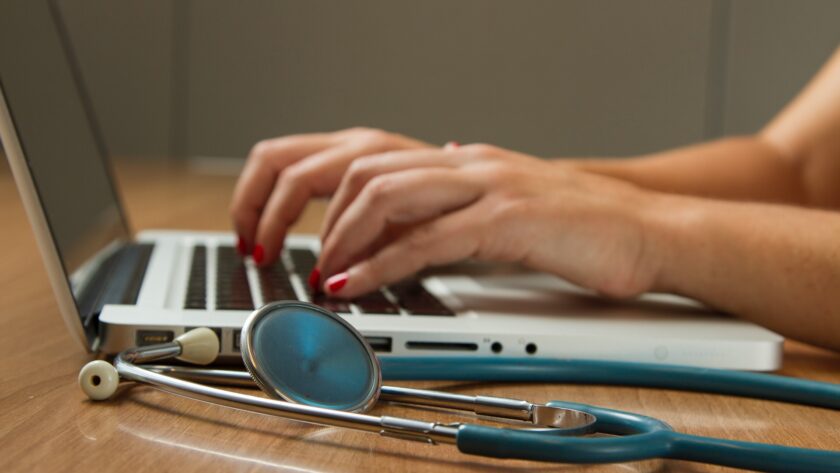When we consider cybersecurity and cybercrime, financial fraud and bank security usually come to mind first. Yet, what can be more significant than safeguarding our healthcare information? Our physical condition and even our lives are at stake, and it’s not just about financial well-being. It’s not about someone obtaining and misusing our electronic health records; rather, it’s about medical personnel failing to access that data promptly.
Cyberattacks are especially prevalent in healthcare, second only to finance. Additionally, the cost of a data breach is the highest in healthcare, according to the HIPAA Journal ($408 per record vs approximately $148 in other areas). Furthermore, 21% of breaches result in legal liability, and 40% in loss of essential data. It is difficult to imagine anything more important than cybersecurity in healthcare, which is often underestimated.
Common Cyberattacks in Healthcare
Deloitte experts have identified numerous threats faced by healthcare organizations, including:
- Phishing generally involves infecting computer systems with malware through links or attachments in emails, which then spreads through clinical networks.
- Man-in-the-middle cybercriminals infiltrate data transmissions and steal personal information, resulting in severe penalties for privacy violations.
- Hackers may exploit network vulnerabilities, such as Address Resolution Protocol (ARP) cache poisoning or HTTPS spoofing, to gain access to patient information on wired and wireless networks.
- Ransomware attacks not only encrypt data and demand payment for decryption but also halt access to entire clinical systems, disabling medical equipment used in surgery and life-support.
- IoT attacks can target patient info and connected medical devices, both invasive and noninvasive, as well as other devices like elevators, HVAC systems, and infusion pumps.
How to Improve Cybersecurity in Healthcare?
Access Control
To ensure patient privacy, healthcare organizations must provide network security against third-party connections. Any external connection will be immediately noticed and eliminated. Of course, as long as it’s set up correctly. This means that you are not only counting on your firewall, but you also have an extra layer of protection.
An advanced-level VPN can provide this. Moreover, it is enough to install the VeePN extension for Edge to make the system work. A system administrator can organize a network in any convenient way using VeePN and get the added benefit of data encryption. With a VPN, the risk of hacking is greatly reduced.
Staff Training
Another effective measure is to provide cybersecurity training for all staff members from the lowest to the highest levels (ideally, no one stores their password on paper under their laptop anymore). The training should cover how to stay protected, which links and emails to avoid when to back up data and install software updates, what constitutes a strong password, and how to use multifactor authentication. Additionally, employees should be instructed on what to do if a hacker attack occurs.
It is worth noting that roughly a third of all data leaks occur as a result of human error – whether intentional or not. You should also explain how to use a VPN and what it is. Since VeePN does not require a lot of training, mastering this technology does not take much time. Within these types of breaches, twice as many are unintentional, meaning that simple human mistakes are often to blame.
Network Segmentation
The technique called network segmentation splits a computer network into several sections or subnets, allowing for enhanced network efficiency and security, as well as better resource allocation and traffic management. Several technologies, such as firewalls, routers, switches, wireless access points, virtual LANs, and proxies, can be employed for network segmentation.
Regular Security Assessments
Regular security assessments are a crucial component of an organization’s cybersecurity management. They involve a thorough examination of the company’s cybersecurity protocols, policies, and practices to identify any gaps or vulnerabilities that could result in a security breach.
Furthermore, frequent security audits also help to identify any emerging threats since the previous audit. To ensure that the organization is still achieving its security goals, these assessments should be performed regularly, such as every six months or once a year.
Encryption
Encryption is the practice of compressing data or communication to protect it from unauthorized access. It involves using a key and an algorithm to encode the data so that only those with proper authorization can decrypt it, ensuring that the data is secure both at rest and in transit.
Testing
Finally, it is essential to conduct comprehensive testing to ensure APIs can be trusted for data sharing in healthcare systems while upholding internal security measures. During API testing, it is also crucial to perform routine medical device cybersecurity testing to ensure that all devices and the network itself are secure from any security threats.
Conclusion
Safeguarding electronic health records and medical devices is essential for any healthcare facility. Healthcare providers need to stay proactive in their approach to cybersecurity by taking advantage of the many resources available to them. Without embracing up-to-date cyber protection mechanisms, healthcare facilities will be at risk of data breaches that can cause great damage both financially and clinically.
With careful planning, healthcare professionals stand a much greater chance of protecting patient records and medical devices from getting into the wrong hands or being corrupted. Healthcare organizations must understand the importance of monitoring data access and implement a robust cyber defense system in order to maintain a secure infrastructure that keeps everyone’s privacy intact. Taking these steps will ensure that the information stored within the hospital’s technology systems remains secure and confidential for years to come.




